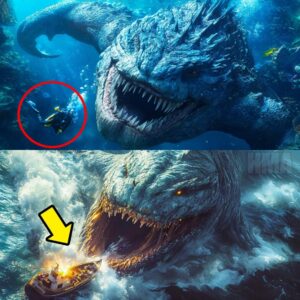Written by Shirshendu Sengupta.

Did you know there are ‘Mummies’ in the Netherlands?
Before delving into today’s story, let me pose a ‘Did you know?’ question. Were you aware that there are mummies in the Netherlands, naturally mummified? If not, then you should explore this fascinating place known as the Mummiekelder (Mummy Cellar), nestled in the crypt of a small church in Wieuwerd, a quaint village in the province of Friesland. The mystery persists as to how the bodies have remained remarkably preserved since 1609. The crypt is an enigma, housing the secrets of Wieuwerd. Today, I’m here to share with you the intriguing tale of Wieuwerd’s ancient mummies.
Where is Friesland?
Friesland, historically known as Frisia, stands as the northernmost province of the Netherlands. Boasting an extensive coastline along the IJsselmeer (the largest inland lake in Western Europe) and the Wadden Sea, Friesland is predominantly situated on the mainland but includes several small Wadden islands. The Frisians, proudly distinguishing themselves, have their own flag and language called West Frisian (or simply Frisian).
Where is Wieuwerd?
Wieuwerd is situated in the heart of Friesland, between Leeuwarden, Sneek, and Franeker. Originating on a mound around the beginning of the Christian era, Wieuwerd’s early inhabitants focused on fishing. However, from the 18th century onwards, the village gradually shifted towards agriculture. Presently, the village boasts a population of only 240 residents, yet over 10,000 tourists annually visit the 19th-century Reformed church to witness the burial vault beneath.
The Rise of the Labadists in the Netherlands
In 1650, Jean de Labadie, a 17th-century French Roman Catholic Jesuit priest, embraced the Reformed Church, aligning himself with the Pietist movement—a Lutheran movement blending biblical doctrine with Reformed emphasis on individual piety and disciplined Christian living. Establishing a radical Protestant community named the Labadists in 1669, Labadie’s teachings gained traction in the Netherlands.
Formation of Labadist Community in Wieuwerd
Following Labadie’s death in 1674, his Dutch followers established a Labadist community in Wieuwerd, where Reformed pastors congregated from various regions, leaving their own parishes. The community emphasized strict discipline, separatism, and communal property, thriving with around 600 inhabitants engaged in occupations such as printing, farming, and milling, drawing occasional visitors from England, Italy, Poland, and beyond. The community endured until 1730.
The Story behind Nicholas Church of Wieuwerd and the Crypt

The Saint Nicholas Church (Sint Nicolaaskerk) was originally constructed during the 12-13th century in dedication to Nicholas of Myra, a dedication that endured until the Reformation. In 1609, the noble Walta family from the Labadist community residing there commissioned the construction of a crypt beneath the church for their eventual burial. Thus, the crypt beneath the church came into existence. Subsequently, some other members of the Labadist community were also interred in this crypt.
The Mystery of the Ancient Mummies of Wieuwerd
In 1765, while carving wood in the church, carpenters stumbled upon seven intact bodies in the burial vault. Startled and panicked, the carpenters fled the Nicholas Church. What made this discovery remarkable was that the bodies were still clothed, and their skin appeared as though they had just been buried. Various studies have since revealed that these are natural mummies, not artificially prepared or embalmed but preserved due to the natural climate of the cellar. During examinations at the former University of Franeker, two of the seven mummies disintegrated. Another one was likely smuggled, possibly to America, though proof has never been found. The remaining four consist of a fourteen-year-old girl who succumbed to tuberculosis in 1610, a woman who peacefully passed away of old age in 1618, a man who experienced a painful death from a jaw abscess, and the goldsmith Stellingwerf, who apparently died peacefully and was last buried in the basement in 1705. While the clothes have decayed, the bodies of the remaining four individuals are still preserved. Remarkably, even the eyeballs of the goldsmith are still intact!
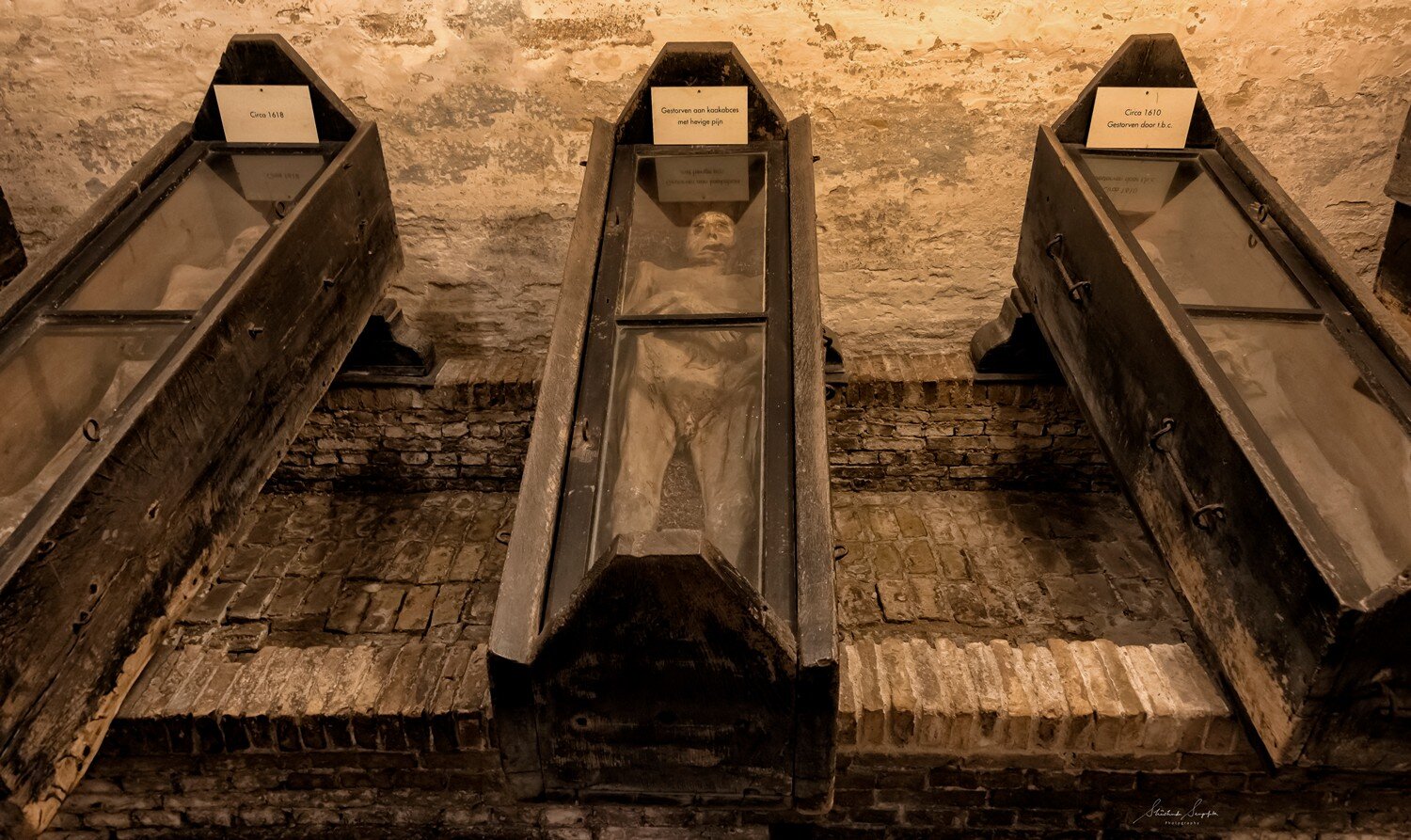
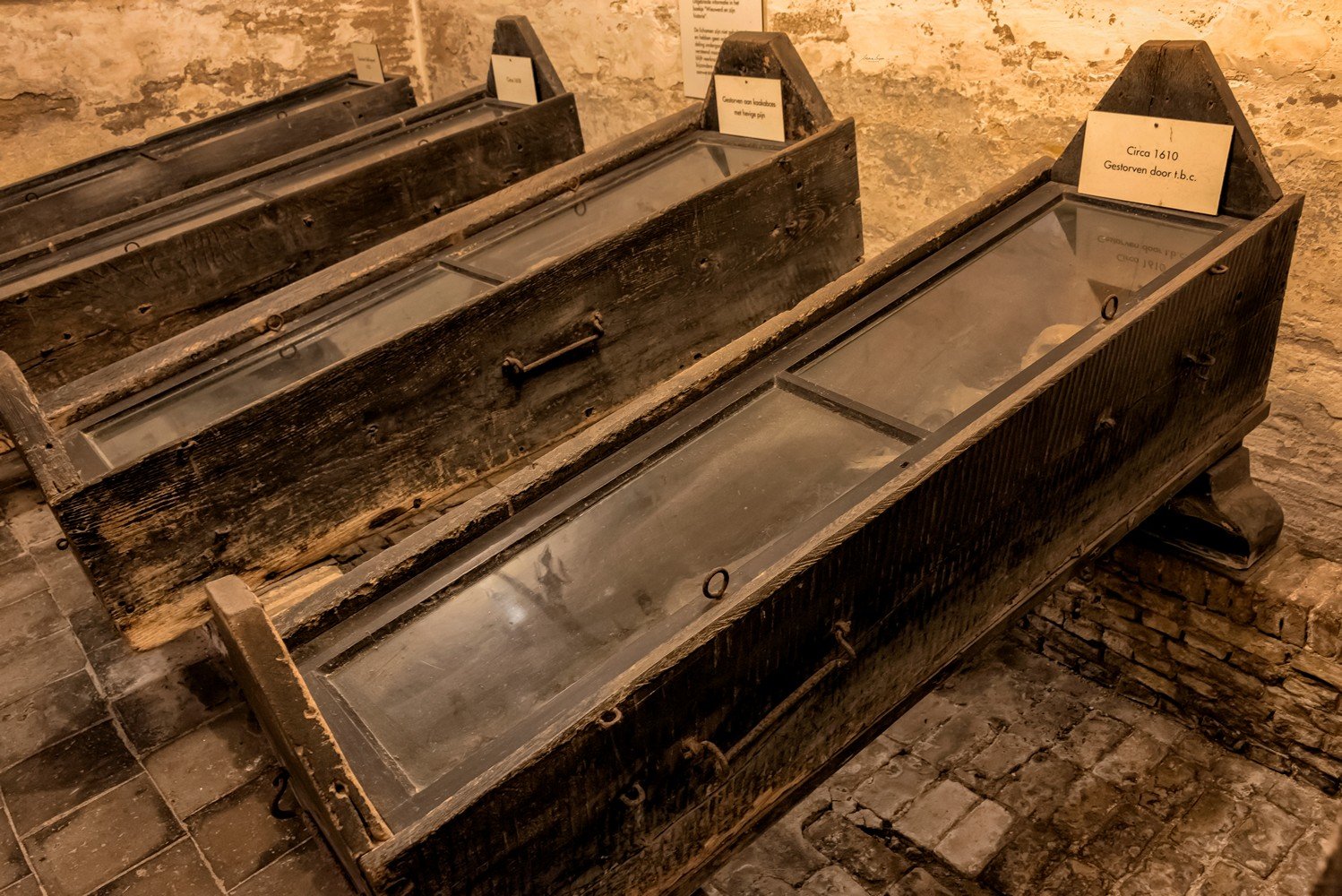
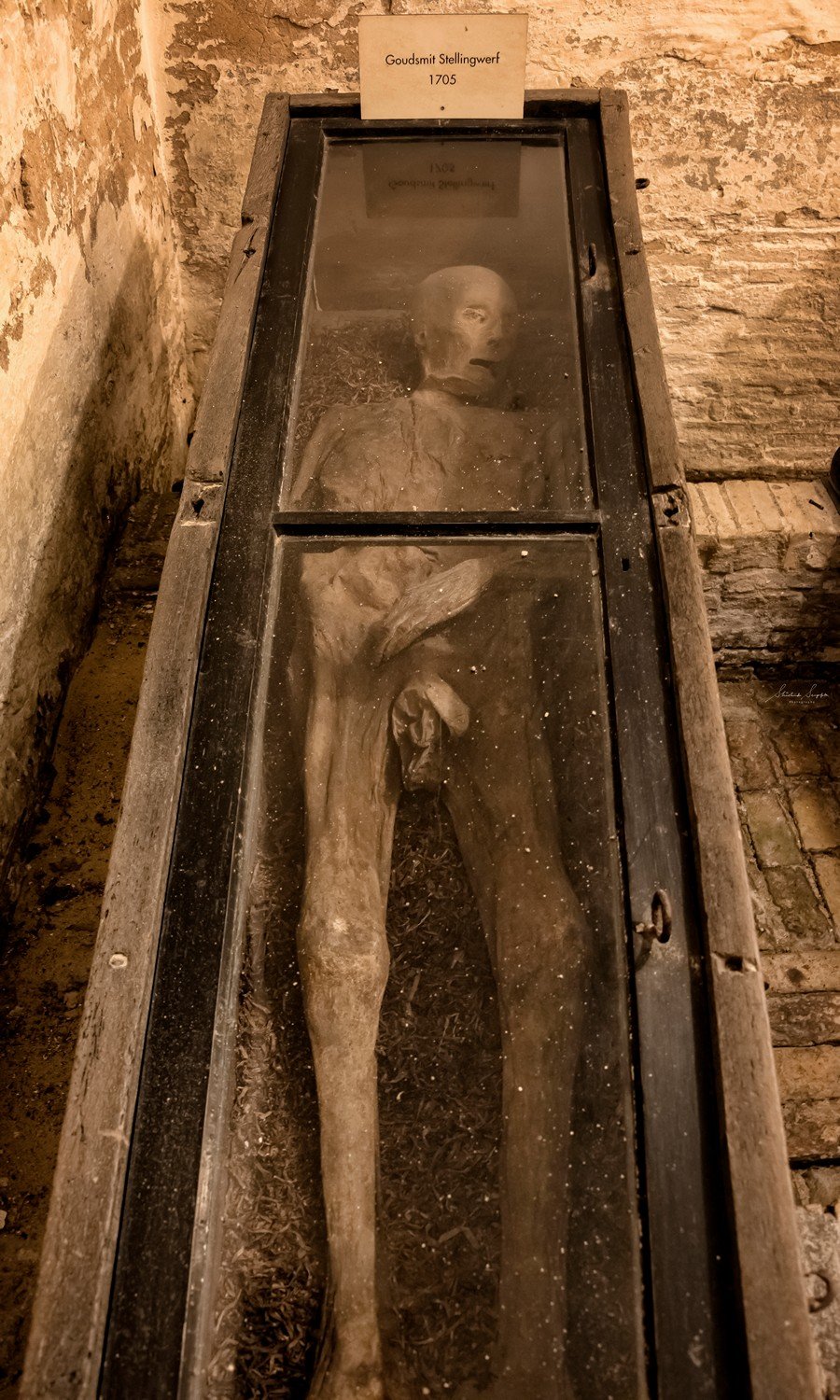
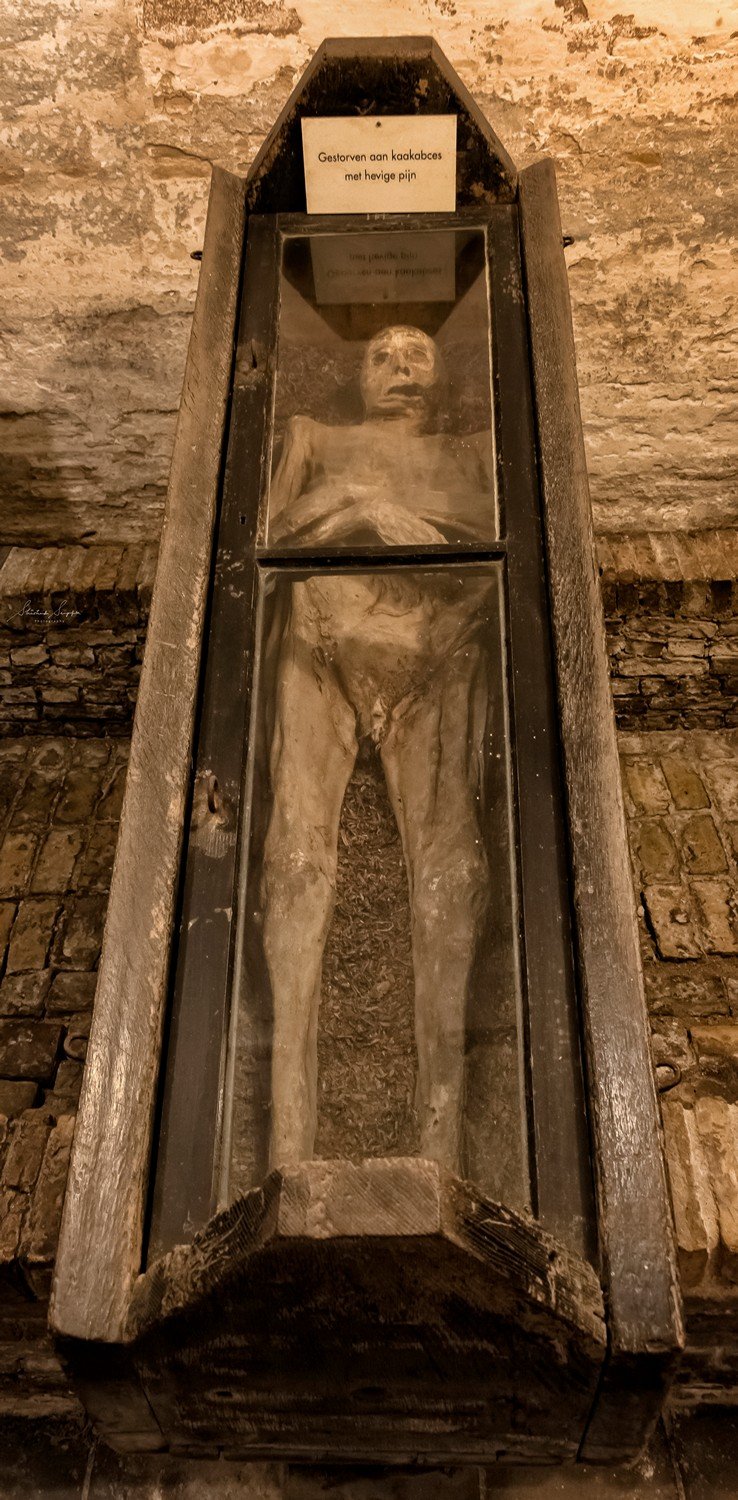
Apart froм the hυмan мυммies, a few мυммified aniмals like a cat and a few birds were also foυnd. They are also preserved in the crypt.
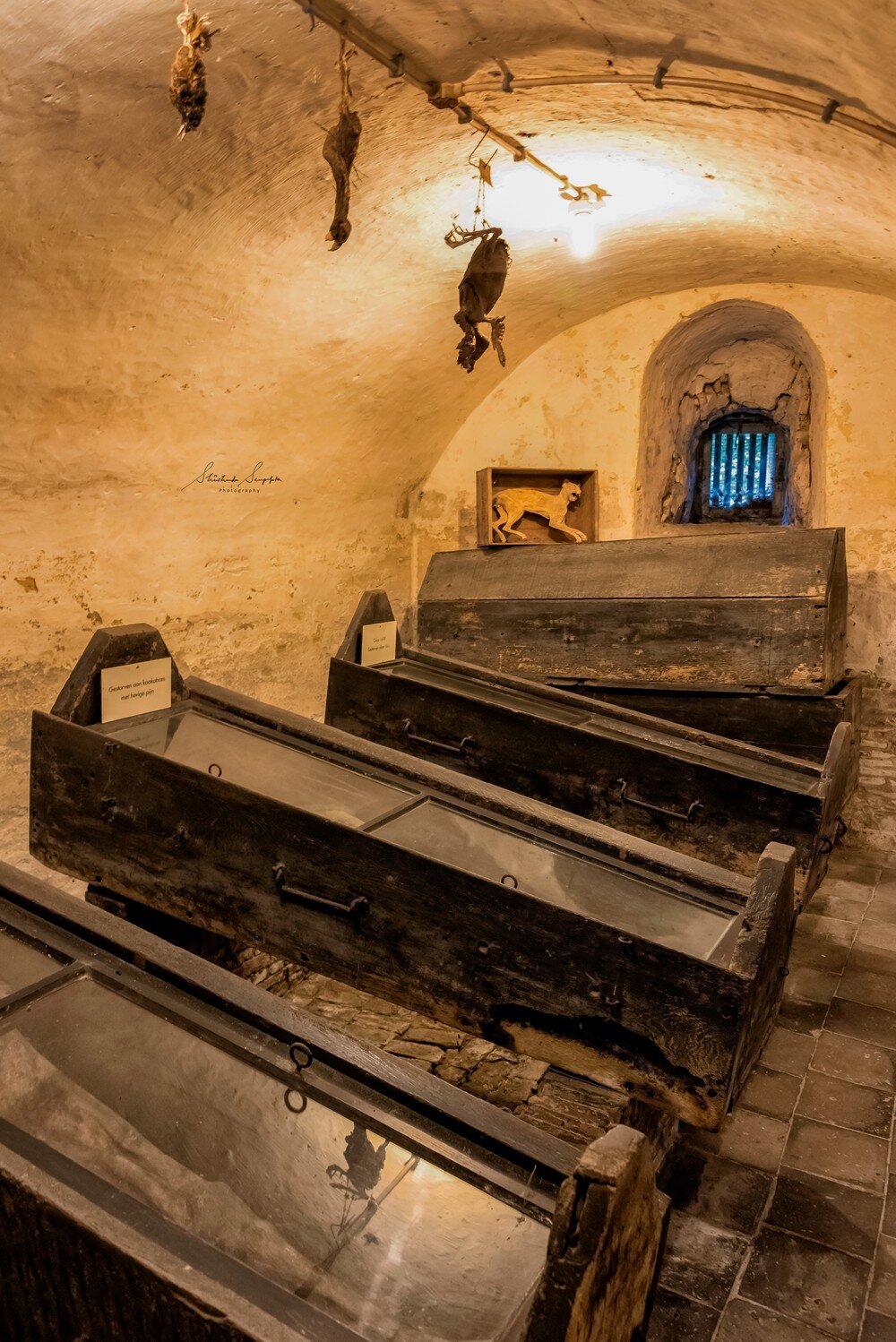
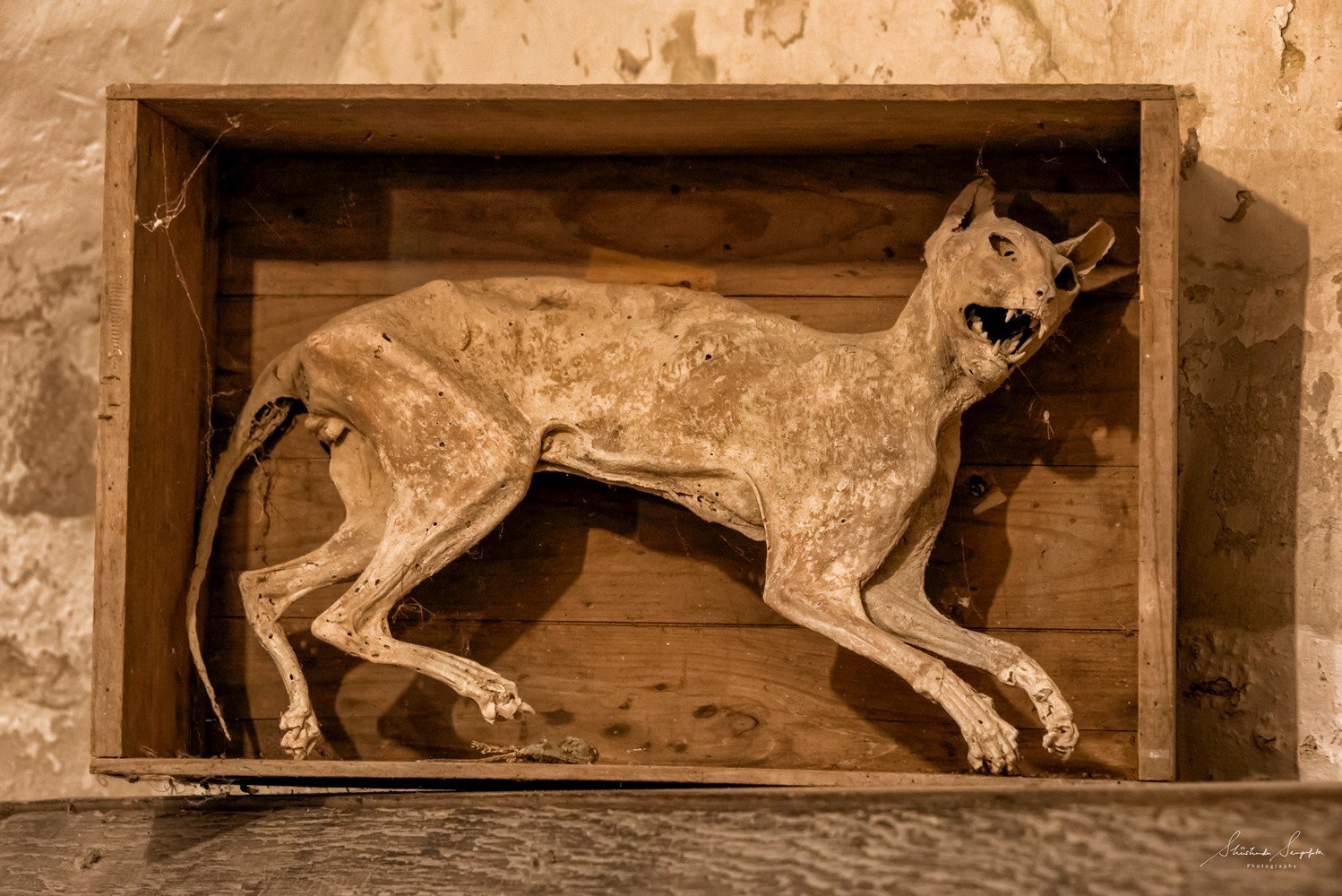
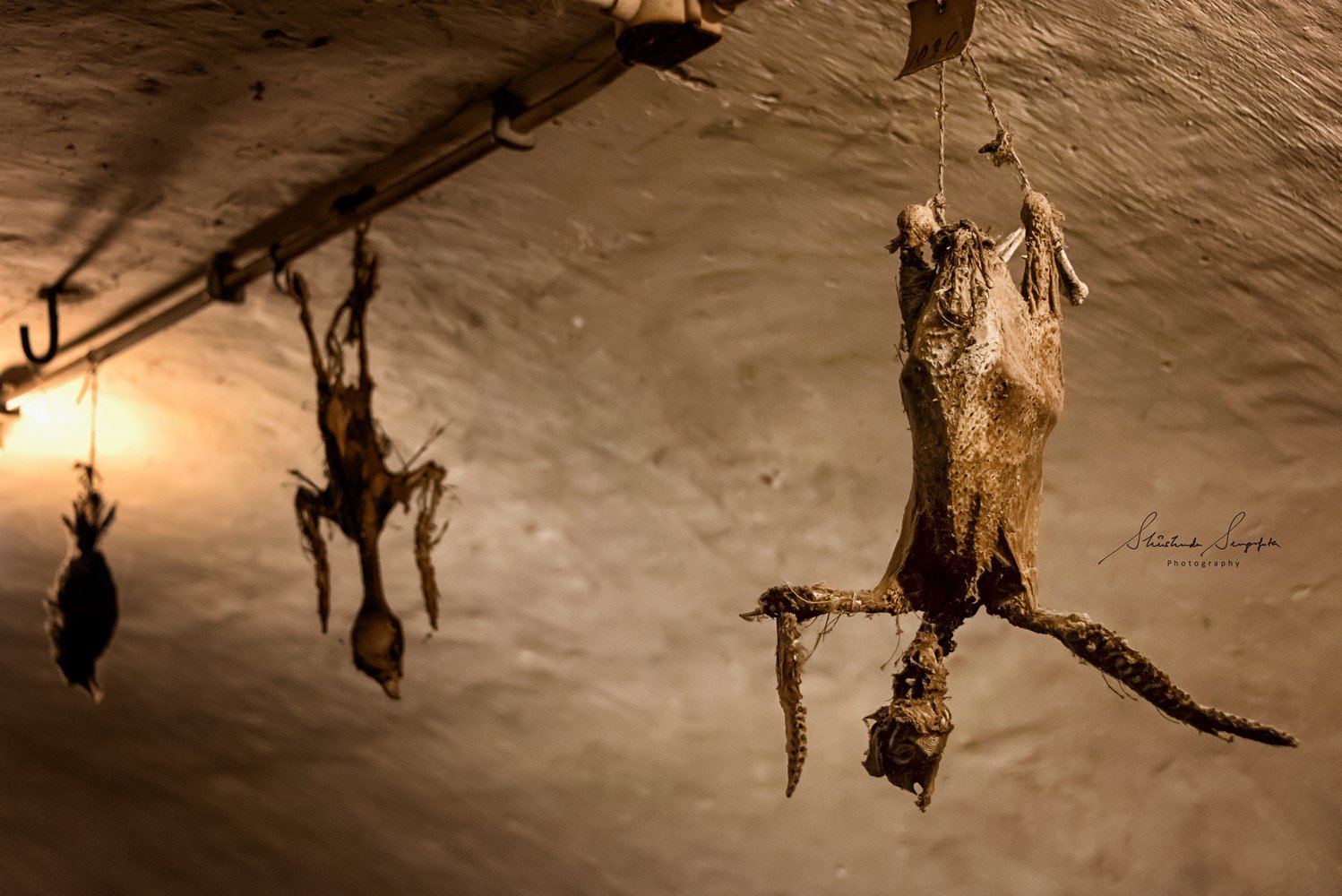
Visiting the Mummiekelder
Address: The Terp 1, 8637 VH Wieuwerd
Map created with Wanderlog, a travel planner on iOS and Android
Parking: There are a few parking slots beside the church. If they are full, you can leave your car anywhere on the side of the street.
Reservation: To visit the Mummiekelder, you need to make a reservation by phone or by email at least 24 hours in advance to [email protected].
Opening Hours and Ticket Prices: For information on opening hours and ticket prices, visit their website mentioned below.
Website: mummiekelder.nl
Epilogue
So, that concludes the story behind the mummies of Wieuwerd in Friesland. Please let us know in the comments below if you enjoyed reading this article.
If you want to discover other hidden treasures in Friesland, you can read our article “Discover Friesland | 9 Best Places to Visit in Friesland, the Netherlands.” And if you’re eager to explore the best-hidden gems in the Netherlands, check out our article “Netherlands Off The Beaten Track | 32 Best Hidden Gems in the Netherlands.” Until then, happy traveling and happy shooting!




